Since the beginning of the pandemic in March, 7 year old Hayley Orlinsky has been making colorful rubber band bracelets that she sells for $3 to $5 each. Hayley’s initial goal was to raise $200 as a fundraiser to buy personal protective equipment for a children’s hospital. So far, the endeavor has generated nearly $20,000 for Ann and Robert H. Lurie Children’s Hospital, prompting praise and purchases from Chicago Mayor Lori Lightfoot, Broadway actor Miguel Cervantes and her beloved White Sox.
It all started when she heard news stories about PPE shortages during the COVID-19 pandemic and was inspired to help. Hayley chose Lurie Children’s Hospital because she spent the early days of her life there due to a breathing problem. The money Hayley raises goes directly to Lurie through a fundraising office. Lurie hasn’t had any problems getting gear and has used the money to pay for masks, goggles, face shields, gloves and other items for medical workers and visitors, said Tracey McCusker, an associate director at the hospital’s foundation.
While many enterprising young people are raising funds for causes close to the heart, the amount Hayley has brought in is unusual. “Her fundraiser is exponentially more than our typical kid fundraiser,” said McCusker who estimates $500 to $1,000 is about average. It’s hard for the second grader to grasp how much more $20,000 is by comparison — but she figures it’s a lot. “It’s more than the tooth fairy gives,” she said. “I want to do it until coronavirus is over,” she said. “It feels like I’m helping a lot of people.”
Her mother, children’s book author Lori Orlinsky, estimates the effort has created roughly 8,000 bracelets, most of them made by Hayley. The fundraiser has been a family project: A 4-year-old sister helps organize the bands by color and both parents help mail the finished products nationwide. Family friend Alysson Bourque, who lives in Sunset, Louisiana, purchased some before joining the project, looping bracelets with her own children. “We were excited that bracelets were a symbol of hope and goodwill and brought people together in a time where people feel disconnected,” said Bourque, who also writes children’s books.
Hayley also introduced the idea at Apachi Day Camp, a summer program she’s attended for years. After Hayley’s pitch, campers of all ages were on board. “It just became a thing that everyone wanted to do,” said Beth Miller, a camp director. “It bonded the kids.”
Read more
A group of local entrepreneurs in Atlanta paid for over $40,000 of groceries just before Thanksgiving. The group surprised shoppers at the Kroger on Wesley Chapel Road in Decatur on Tuesday. Video posted by entrepreneur Brad Giles’ Instagram pages shows customers dance for joy and tear up as they go through the checkout lanes — only to find their bills taken care of. The generous benefactors worked the registers and delighted customers with the news.
The social media post read “This is the season of giving and it’s more important than ever to give back to those in need! We had the Kroger at Wesley chapel in Atl on fire by giving out free groceries and paying for everyone for over 2 hours! Well over $40,000 of purchases given back to our community! I’m so proud to be a part of an incredible group of successful entrepreneurs that banded together to make this happen! Not only did we shut down the grocery store, we helped inspire the community by showing them that Entrepreneurs can give back to the community just as big as any celebrity and it was so much fun helping so many people this holiday season! “We literally took up all 12 registers for two hours at the grocery store and family after family would go through,” Jason Lobdell, one of the benefactors said.
As many still suffer from the economic fallout of the Covid-19 pandemic, spreading food insecurity across America, it is important for people to help others where they can. Millions are still without jobs due to the Covid-19 pandemic and according to Feeding America, the nation’s largest hunger-relief organization, more than 54 million more people in the country could soon face food insecurity. That is 17 million more than before the coronavirus outbreak.
Local churches across the country have been trying to keep up with communities’ food distribution and are experiencing record turnout with car lines miles long in some areas. Brad and Tronda Giles, along with several of their fellow entrepreneurs took notice and wanted to give back. “We’ve always had that love for giving back and helping individuals who have never had help before, and all the people we help in our work translates to who want to help in our communities,” Brad said.
The Giles’ said that after their group’s show of giving went viral, other entrepreneurs reached out to them to learn how they could give back. “Every little bit counts. Giving is something we all have to do as a community, and if we can all give to each other, it’s going to make everybody stronger,” said Giles.
Read more
One year after the first Michael Jordan Family Medical Clinic opened its doors in Charlotte, North Carolina, Jordan and his partner Novant Health have opened a second facility. The North End facility has the same goal of providing vital access to primary and preventive care to individuals who are uninsured or underinsured. Like with the original medical clinic in west Charlotte, which was built with a generous $7 million grant from Michael Jordan, the new one also offers behavioral health and social support services—addressing health equity gaps further exacerbated by COVID-19.
Carl Armato, CEO and president of Novant Health said “Michael Jordan’s commitment to improving the health of our communities, and society, is deep-rooted. The impact of the first clinic has been measurable and if COVID-19 has taught us anything, it is the importance of having accessible, safe, and quality care in communities that need it most.”
In its first year, the first clinic on Freedom Drive had seen more than 3,350 patients, including more than 450 children. Of those, nearly 700 patients were assisted by the clinic’s full-time social worker with nearly 80 patients being referred for additional behavioral health care. In April, when the clinic transitioned into a respiratory assessment center to meet the communities’ needs for accessible coronavirus screening, testing, treatment and education, they completed 12,584 appointments and performed nearly 14,000 COVID-19 tests.
Jordan said “When we came together to mark the first clinic’s opening last fall, no one could have predicted we would be facing a global pandemic just five months later. I’m so proud of the positive impact our clinic has had on the community so far, especially during COVID-19. Our second clinic will provide critical services to improve the health and lives of more Charlotteans, which is so important to me and to Novant Health.”
Both clinics provide integrative services that includes primary care, behavioral health and social support services. Every patient is screened based on social determinants of health such as how a patient’s socioeconomic status and environment affect their overall health. The 6,800-square-foot clinic at 2701 Statesville Ave. in Charlotte is the same size as the first clinic with 12 exam rooms, an X-ray room and physical therapy space. Both clinics service patients of all ages and thousands of uninsured have already been helped by his efforts, and thousands more will be in the years to come.
Jordan grew up in Wilmington, North Carolina, and went to the University of North Carolina at Chapel Hill. He has been the majority owner of the Charlotte Hornets since 2010. A lack of health care is a major issue affecting millions of people in this country, and Jordan is doing his part to directly address the needs of those less fortunate than him.
Read more
A 14-year-old girl from Texas has discovered a molecule that can selectively bind to the spike protein of the SARS-CoV-2. Eighth grader Anika Chebrolu has been named the winner of the 2020 3M Young Scientist Challenge—America’s premier middle school science competition. She received a $25,000 gift for her award-winning work and a one-of-a-kind 2 day/1-night destination trip.
The Young Scientist Challenge is a youth science and engineering competition administered by Discovery Education and 3M for middle school students in the United States. Students apply by creating a 1-2 minute video detailing their idea for a new invention intended to solve an everyday problem. Ten finalists are chosen annually to work alongside a 3M scientist during a summer mentorship and receive a trip to the 3M Innovation Center in St. Paul, Minnesota, to compete for $25,000 and the title of America’s Top Young Scientist.
Anika’s winning invention uses in-silico methodology to discover a lead molecule that can selectively bind to the spike protein of the SARS-CoV-2 virus. Binding and inhibiting this viral protein would potentially stop the virus entry into the cell, creating a viable drug target. As part of her research, Anika screened millions of small molecules for drug-likeness properties, ADMET properties, and binding affinities against the spike protein using numerous software tools. The one molecule with the best pharmacological and biological activity towards the spike protein of the SARS-CoV-2 virus was chosen as the lead molecule that can be a potential drug for the effective treatment of COVID-19.
Initially, her goal was to use in-silico methods to identify a lead compound that could bind to a protein of the influenza virus. She was inspired to find potential cures to viruses after learning about the 1918 flu pandemic and finding out how many people die every year in the United States despite annual vaccinations and anti-influenza drugs on the market.
“After spending so much time researching about pandemics, viruses and drug discovery, it was crazy to think that I was actually living through something like this,” Anika said. “Because of the immense severity of the Covid-19 pandemic and the drastic impact it had made on the world in such a short time, I, with the help of my mentor, Dr. Mahfuza Ali, changed directions to target the SARS-CoV-2 virus.”
Anika said winning the prize and title of top young scientist is an honor, but her work isn’t done. Her next goal, she says, is to work alongside scientists and researchers who are fighting to “control the morbidity and mortality” of the pandemic by developing her findings into an actual cure for the virus. Chebrolu also received the “Improving Lives Award,” according to a release from Frisco ISD.
“I am extremely humbled at being selected America’s Top Young Scientist as all of the finalists had amazing projects and were extremely well-rounded individuals,” Anika said in the Frisco release. “Science is the basis of life and the entire universe and we have a long way to go to understand it fully.” While she hopes to be a medical researcher and professor in the future, she is already doing grown-up work and inspiring a generation to reach for the stars.
Read more
When 57-year-old Lane Unhjem suffered a heart attack while trying to put out a fire on his farm, he never imagined how quickly his rural community would rally to help him. One of his combines, which harvest crops, caught fire while he was working his farm in Crosby, North Dakota. Unjjem had a heart attack while working to put it out and was airlifted to Trinity Medical Center in Minot, North Dakota where he is in critical condition.
Close family friend, Jenna Binde, wanted to organize a group to help out on the farm while Unhjem was recovering. Binde and two local farmers began to organize a harvesting event, but she actually had to do very little to rally the troops. Farmers started calling and asking if they could help,” she said. “Within two hours of him being flown out of Crosby, I had over half the equipment and people already lined up.”
Binde said locals who knew she was close to the Unhjem family reached out to her — she never had to call anyone herself. On September 12, 60 volunteers showed up to the Unhjem farm, bringing 11 combines, six grain carts and 15 semis with them. “We live in a pretty rural area, so anyone within 10 miles can be considered a neighbor. Most were within 10 miles but others traveled farther than that because they are good friends with the Unhjems and wanted to pitch in.”
Most of the volunteers were farmers or their farm hands, she said. Unhjem already had his peas harvested before his heart attack but the group spent over seven hours on his durum wheat and canola crops. “The volunteers that came that day did more than just volunteer their time. They all had their own fields to still harvest but they selflessly put that behind them and made the Unhjems a priority that day.” Binde said. “The family is super thankful and it saved them a lot of headache and frustration of trying to figure out how they would get their crops off without Lane or a combine,” she said. “It was a pretty remarkable day and I was so happy to be a part of it.”
Binde said she didn’t think the gesture was a big deal. “This is just what we do around here when someone in our community is in need of help. What seems completely normal and natural to us here, unfortunately isn’t the case across the nation. I hope others read this story and forget about all the turmoil going on currently and just remember to lend a hand when needed and expect nothing in return. If we could all just do that, we’d be in a better place.”
Read more
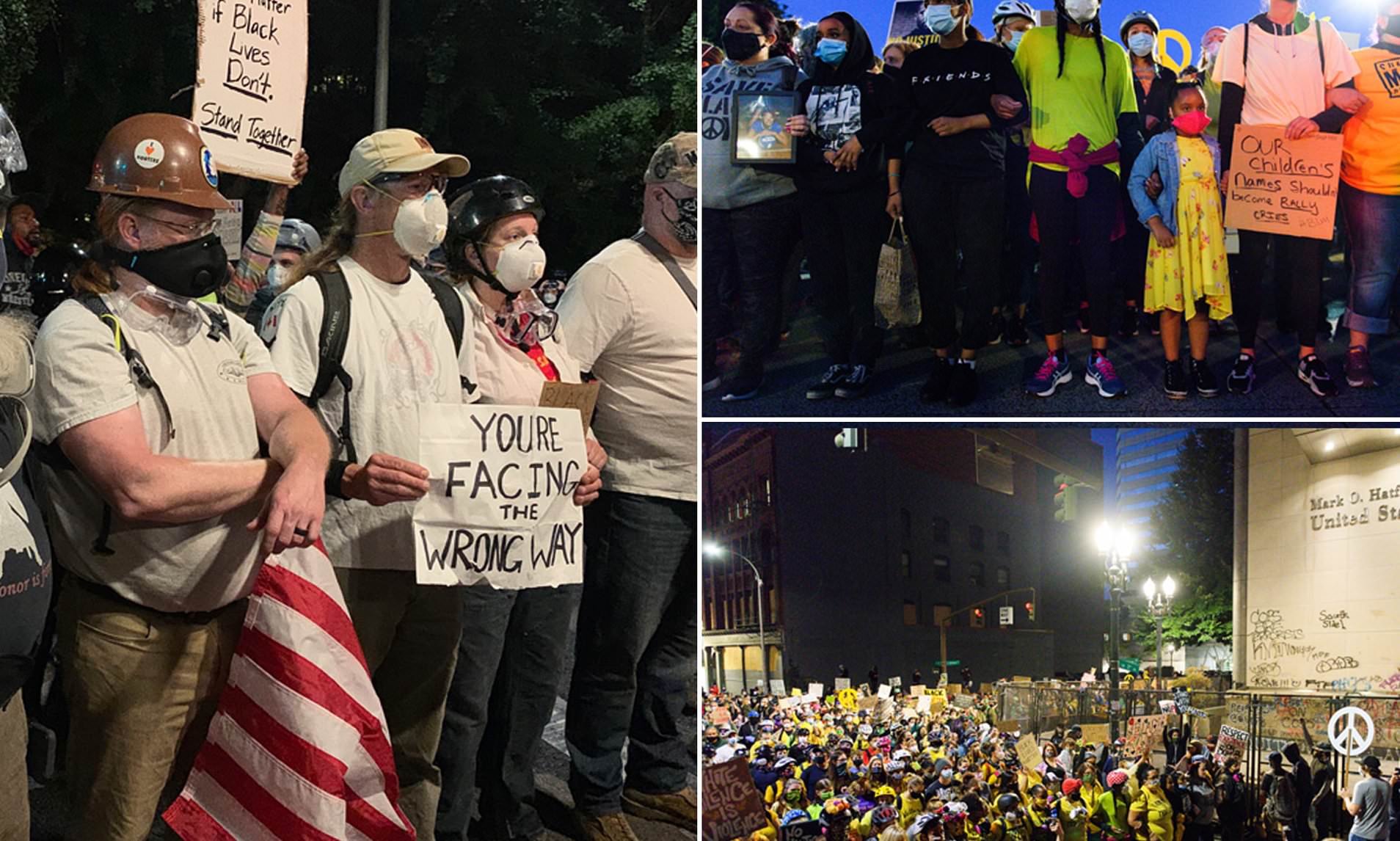
Black Lives Matter protests continue into their third month in many cities across the US as federal agents drew down their presence in Portland, Oregon last week after a widely condemned violent crackdown on the demonstrators. For weeks, Portland activists have protested racial inequities in the criminal justice system. The Portland police chief stepped down and the Portland City Council slashed the police budget by millions. The Multnomah County district attorney stepped down five months early to make room for his reform-minded successor. The governor also called a special legislative session to address demands for police accountability.
Portland police and city leaders openly struggled with how to respond to nightly havoc wrought by a smaller core of demonstrators. The White House sent federal marshals to Portland to quell the protests. As the number of videos of excessive force used by federal marshals against peaceful protestors began to circulate on social media, so did the size of the protests. Tensions escalated after an officer with the Marshals Service fired a less-lethal round at protester Donavan La Bella’s head on July 11, critically injuring him.
Videos of La Bella’s assault and others prompted the Wall of Moms, a group of approximately 40 women, some pregnant, who first attended the protests in Portland to help protect protestors from the violence they had seen in their own city. Now, the Wall of Moms has grown to over 14,000 and they have popped up at protests in Boston, Chicago, Washington DC and many other cities across the US.
When videos out of Portland began circulating showing the Wall of Moms being sprayed in the face with tear gas while standing with arms interlocked in front of protestors, the Wall of Dads emerged, armed with leaf blowers to blow the tear gas away. The violence continued and video of navy veteran Christopher David emerged, showing him being pepper sprayed and repeatedly struck with a baton by a marshal when he walked up to them to ask a question. David suffered a fractured hand that will require surgery.
Within a week of David’s assault going viral, a new wall, the Wall of Veterans joined the frontlines in Portland to curb the violence by federal marshals. Their numbers swelled and they were soon joined by other burgeoning groups — green-shirted Teachers Against Tyrants, the pizza-box carrying ChefBloc, the Wall of Nurses, health-care workers in scrubs and Lawyers for Black Lives, who turned up at the protest in suits and ties.
Michelle Heisler, the medical director of Physicians for Human Rights said that typically, police fire the tear gas or pepper spray agent once or twice to clear crowds and encourage people to move away from an area, but in Portland, federal agents have been unleashing the chemicals repeatedly for hours. This sustained cascade makes it difficult for peaceful demonstrators to avoid being hit and runs the risk of ensnaring bystanders in the area.
The Marshal Service has acknowledged only the two instances of excessive force that were caught on video and are currently under internal review by the agency involving La Bella and David. Marshals and other law enforcement agencies have been criticized for their use of tear gas and other irritants on protestors. A representative for the Marshal service said they are defending themselves against coordinated attacks by a smaller group of organized protestors that stay behind after the peaceful protestors leave.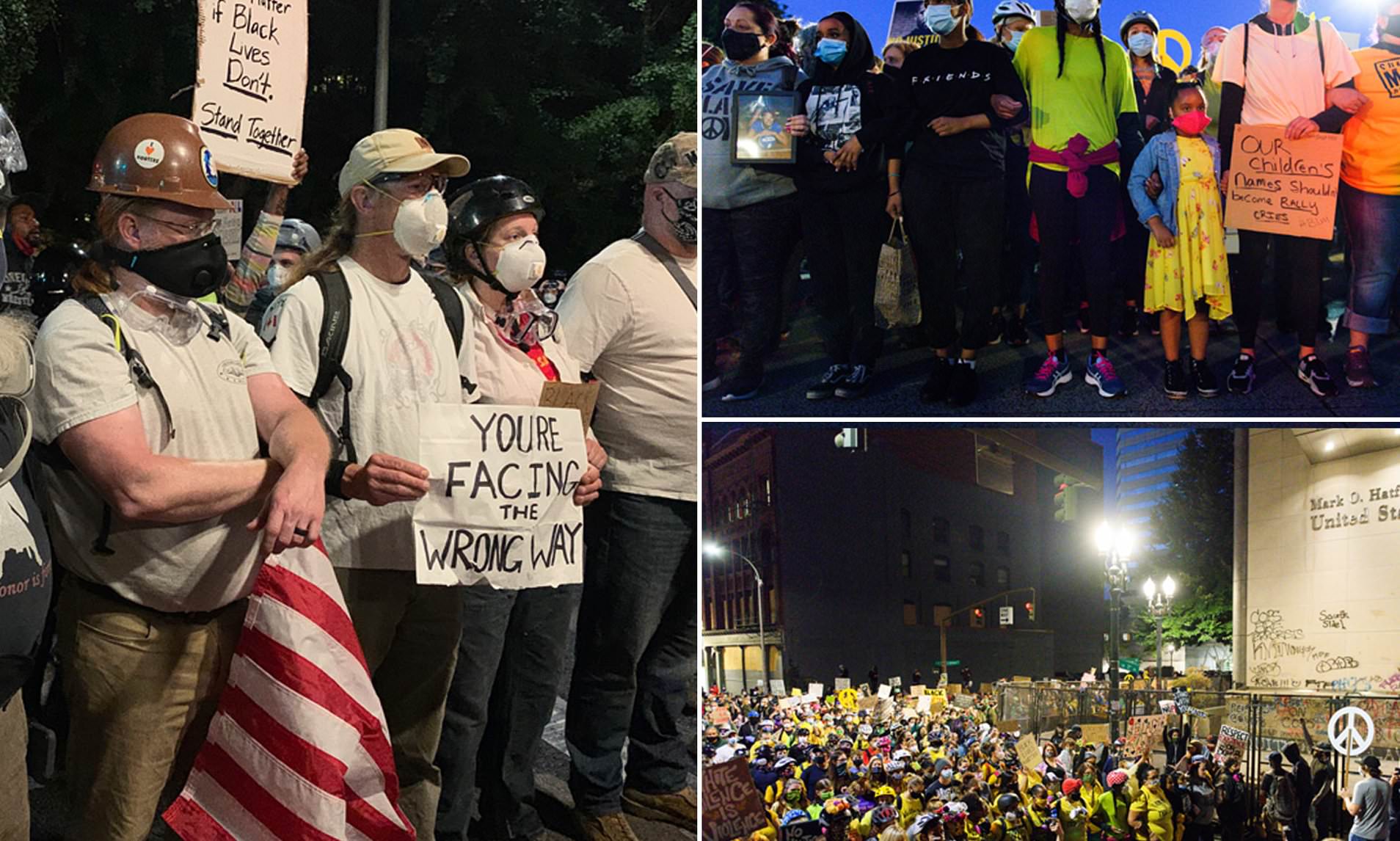
Read more
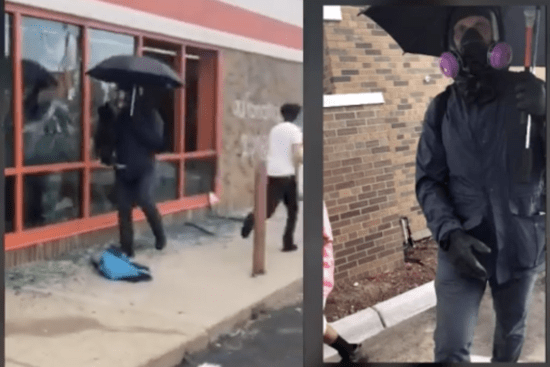
Minneapolis police have issued an arrest warrant for a suspect known as “Umbrella Man” who was filmed smashing the windows of an auto parts dealership on May 27, two days after the police killing of George Floyd. Video of the “Umbrella Man” went viral after protesters in Minneapolis confronted and filmed him while he was in the act of smashing several windows of an AutoZone store. Investigators say the man is a white supremacist who sought to provoke violence against protesters. The term “Umbrella Man” was coined on social media as people guessed at his identity, with some protesters speculating he was actually a member of the police force.
According to a search warrant, the man is associated with the “Aryan Cowboys,” which the Anti-Defamation League lists as a White supremacist prison and street gang. The warrant does not label them as a White supremacist group, but describes them as a “known prison gang out of Minnesota and Kentucky.” A Minneapolis arson investigator wrote in the search warrant affidavit that the man also spray painted the words “free sh*t for everyone zone” on the doors of the AutoZone. Not long after he smashed in the windows, looting began, and a bit later the AutoZone was set on fire, the affidavit said.
“This was the first fire that set off a string of fires and looting throughout the precinct and the rest of the city,” Sgt. Erika Christensen, wrote in the affidavit. “Until the actions of the person your affiant has been calling ‘Umbrella Man,’ the protests had been relatively peaceful. The actions of this person created an atmosphere of hostility and tension. Your affiant believes that this individual’s sole aim was to incite violence.”
Police identified the 32-year-old suspect through a tip last week but the suspect has not been named. Minneapolis police spokesman John Elder told the Associated Press he could not confirm the name of the person involved, but said the investigation remains open and active. The tipster told the investigator that the man was a member of the Hells Angels biker gang who “wanted to sow discord and racial unrest by breaking out the windows and writing what he did on the double red doors.” Police matched him to photos a Muslim woman took when she was harassed during an encounter with the Aryan Cowboy Brotherhood, while eating burgers with her young daughter in Stillwater in June.
The riots spread to other parts of Minneapolis and led to Minneapolis’ 3rd Precinct burning down, and according to Minnesota Gov. Tim Walz, resulted in $500 million in property damage. At least two people died — one a man who was fatally shot at a Minneapolis pawnshop and another man whose burned body was found in the ruins of another pawnshop.
Protests against police brutality and systemic racism continue in cities across the country in the wake of Floyd’s death. The Black Lives Matter movement has drawn tens of millions into the streets to participate in protests taking place every day since May. The protests have been plagued with violence from the start. They continue to push for police reform and an end to systemic inequalities around race. It has led to radical reform in recent months in many states and the faces of those they continue to seek justice for continue to change as more police shootings occur.
Read more
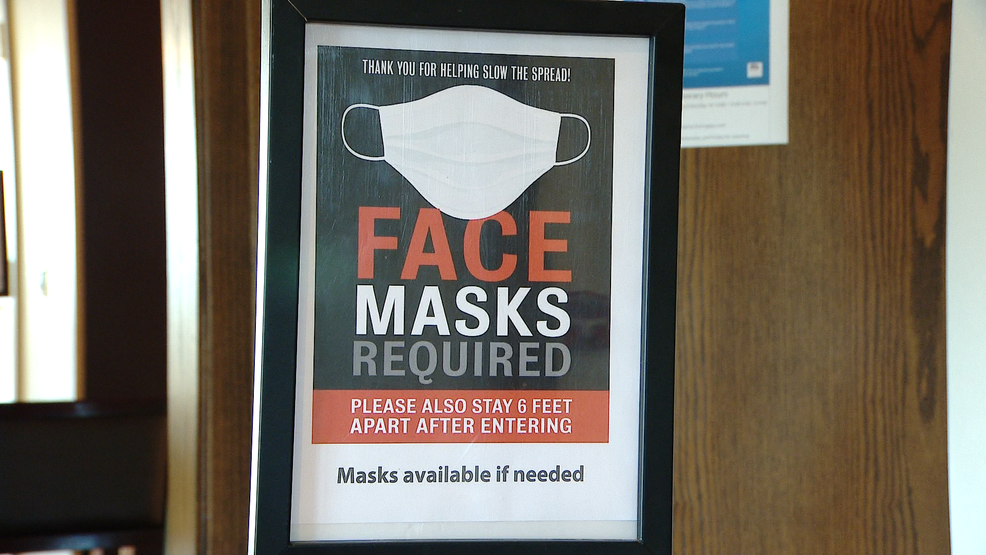
The U.S. coronavirus outbreak continues with over 3 million confirmed cases as more states reported record numbers of new infections, and Florida faced an impending shortage of intensive care unit hospital beds. Additional hospitalizations could strain healthcare systems in many areas, leading to an uptick in deaths from the respiratory illness that has killed more than 131,000 Americans since the pandemic began and many survivors are grappling with long-term complications. Authorities have reported alarming increases of daily caseloads in roughly two dozen states over the past two weeks, a sign that efforts to control transmission of the novel coronavirus have failed in large swaths of the country.
Last week, the country averaged just under 50,000 new cases daily — the highest rate recorded, and twice as high as a month ago. An influential coronavirus model has increased its projections for US deaths and it’s now forecasting more than 208,000 deaths by November. Experts say that face masks could save as many as 45,000 US lives by November if 95% of the population wears a covering in public, according to the Institute for Health Metrics and Evaluation (IHME) at the University of Washington, which built the model.
California, Hawaii, Missouri, Montana, Oklahoma and Texas shattered their previous daily record highs for new cases. California reported more than 10,000 coronavirus cases in one day, a record rise for a single day that also surpassed the number of contact tracers recently trained by the state to detect and prevent potential outbreaks. About 24 states have also reported disturbingly high infection rates as a percentage of diagnostic tests conducted over the past week. New COVID-19 infections have risen in 42 states in the past two weeks. Only three other U.S. states have reported more than 10,000 cases in a day. Florida reported 11,458 new cases on July 4 and Texas reported 10,028 on July 7.
At least 56 intensive care units in Florida hospitals had reached capacity on July 7, state officials said. Another 35 hospitals show ICU bed availability of 10% or less, according to the Agency for Health Care Administration in that state. Georgia surpassed 100,000 reported coronavirus cases, becoming the ninth state to pass the mark. In California, the number of hospitalizations across the state were at an all-time high and the virus positivity rate jumped more than 2% in Los Angeles.
New York recorded 12,847 new infections on April 10, three weeks after the state implemented a strict lockdown that closed most businesses. Once the epicenter of the U.S. epidemic, New York saw cases rise by about 6% in June – the lowest rate in the entire country. In Texas, the number of hospitalized patients has more than doubled in just two weeks. The U.S. Department of Health and Human Services said it was adding short-term “surge” testing sites in three metropolitan areas in Florida, Louisiana and Texas.
Affecting nearly one of every 100 Americans, the surge has forced authorities to backpedal on moves to reopen businesses, such as restaurants and bars, after mandatory lockdowns in March and April reduced economic activity to a virtual standstill and put millions of Americans out of work.
Governors and mayors in many states have ordered people in hotspot counties to wear face coverings in public. Recently published research found that on average, the time from exposure to symptom onset (known as the incubation period) is about five to six days. However, studies have shown that symptoms could appear as soon as three days after exposure to as long as 13 days later. That is why contact tracing is so important in controlling the spread of the coronavirus although in parts of the south and southwest, cases are now rising so quickly that experts are warning contact tracing isn’t possible any more.
Read more
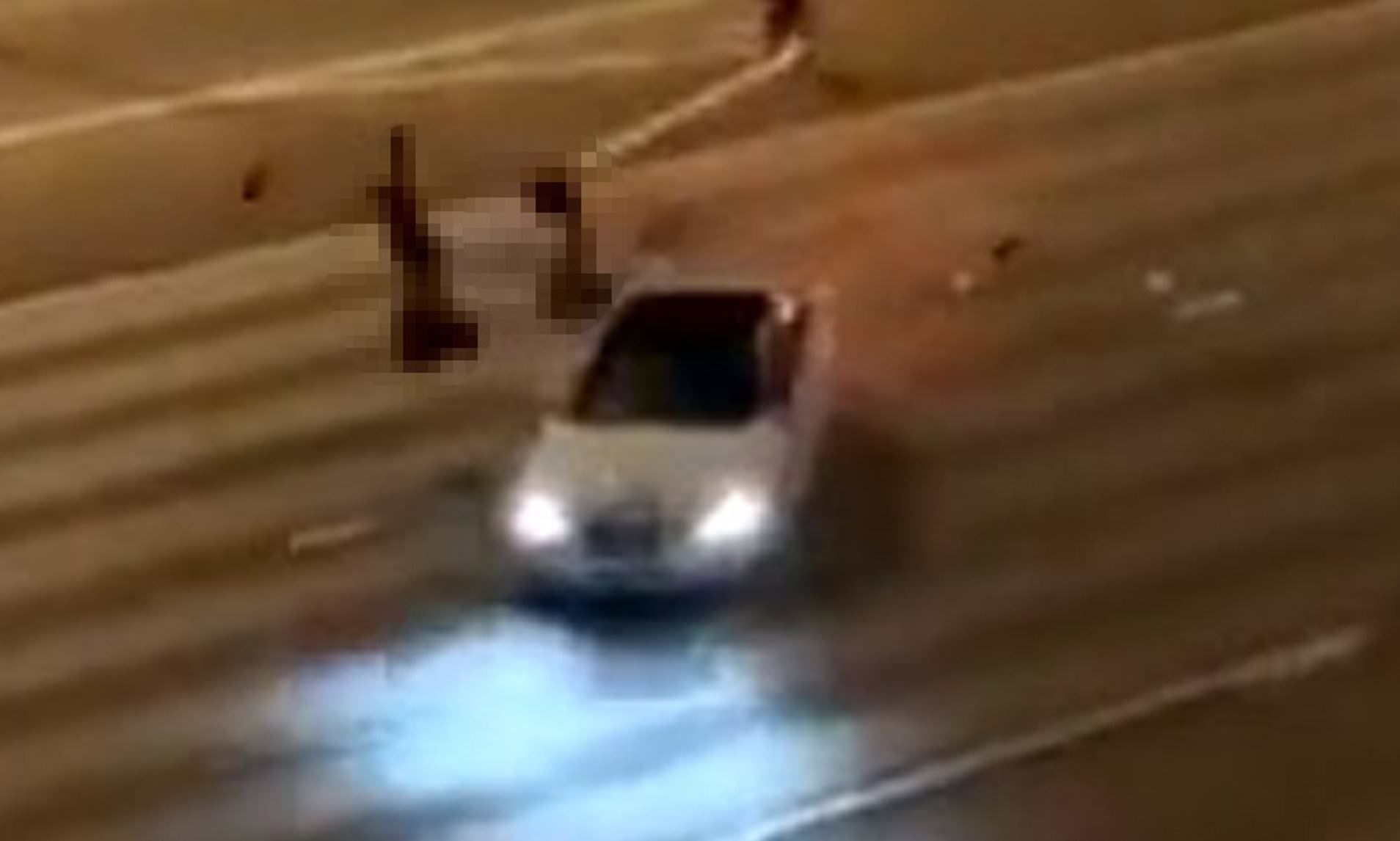
Researchers at the University of Chicago have documented 50 incidents of Black Lives Matter protestors being hit by cars from May 27 to June 17 across the country. The rash of attacks where they say right wing extremists have used their vehicles as weapons against Black Lives Matter protestors. Of those, five were by law enforcement and 45 by civilians. At least 18 are categorized as deliberate attacks; another two dozen are unclear as to motivation or are still under investigation, according to a count released Friday by Ari Weil, a terrorism researcher at the University of Chicago’s Chicago Project on Security and Threats. Weil has tracked vehicle-ramming attacks, or VRAs, since protests began.
Four were ruled accidental, including the viral incident when a tanker barreled down a highway in Minneapolis, sending terrified protesters running for their lives. Authorities later released the driver without charges, saying he had acted foolishly but did not deliberately target protesters.
The 20 people facing prosecution in the incidents include a state leader of the Virginia Ku Klux Klan, as well as a California man who was charged with attempted murder after antagonizing protesters and then driving into them, striking a teenage girl. Video footage of some attacks shows drivers yelling at or threatening Black Lives Matter protesters before hitting the gas.
In New York, an SUV driver sped through a peaceful protest march in Times Square, narrowly missing several people. In Bloomington, Indiana, two people were injured when a driver rammed a peaceful march demanding justice for a Black activist who survived an attempted lynching. In Long Island, New York, police arrested a man after he allegedly plowed his SUV into a crowd of Black Lives Matter protesters, injuring two people. One ramming in Boston unfolded live on the local TV news, with the reporter at the scene saying, “Several people just got hit! Several people just got run over!”
A 27-year-old man, Dawit Kelete was charged with vehicular homicide, vehicular assault and reckless driving after barreling into a Black Lives Matter protest on a closed Seattle freeway, killing protester Summer Taylor, 24, and seriously injuring nother protester, Diaz Love, 32. Kelete allegedly drove his white Jaguar onto a closed section of the interstate where ongoing demonstrations have been occurring, and slammed into Taylor and Diaz.
Surveillance video captured the 2013 Jaguar apparently speeding down the freeway, swerving around cars supporting the protest that were blocking the lanes, and striking Taylor and Love, who were walking on the shoulder. The blow knocked them into the air, over the roof of the vehicle, and onto the pavement. According to the charging documents, Kelete allegedly did not slow down as he drove on the shoulder, aiming for the two.
The last rash of vehicle rammings occurred in 2015 and 2016, Weil said, when the “Run Them Over” meme was popularized in far-right circles in response to Black Lives Matter protests and demonstrations against the controversial Dakota Access Pipeline. The most high-profile attack occurred a year later, during the 2017 Unite the Right rally in Charlottesville, Virginia. James Alex Fields previously espoused neo-Nazi and white supremacist beliefs. He was convicted of hit and run and first degree murder after he plowed his car into a crowd, killing 32-year-old Heather Heyer and wounding dozens of others.
“To see dozens of these incidents occur over two weekends was surprisingly high. I want to caution that this isn’t just a far-right, neo-Nazi thing, but it’s becoming something that’s encouraged broadly, and I think that should worry everyone,” Weil said.
Read more
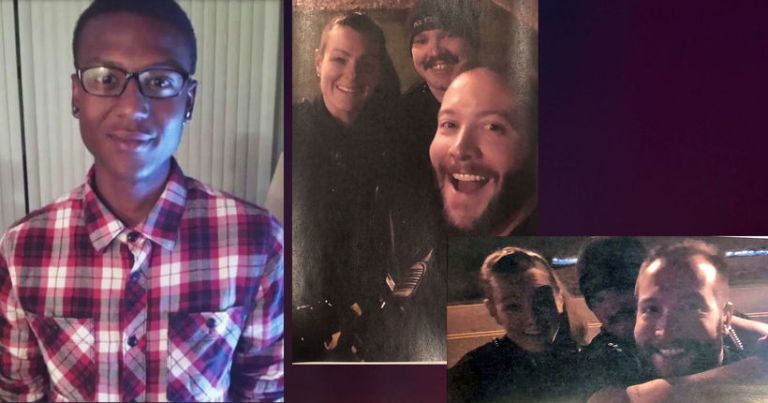
Protests against racism and police violence continued over the weekend. In Aurora, Colorado, police used pepper spray on crowds as thousands took to the streets, shutting down an interstate, in a call for justice for Elijah McClain. McClain, 23, was killed by police after he was tackled by police as he headed home from a local convenience store, placed in a chokehold and then injected with the sedative ketamine by paramedics. Three officers with the Aurora Police Department were fired, and a fourth resigned, after they took selfie photos reenacting the killing of Elijah McClain in front of a memorial for him two months after his death. Aurora’s interim police chief, Vanessa Wilson, called the photo a “crime against humanity and decency.”
Colorado Governor Jared Polis announced a special prosecutor would reopen a probe into the police killing of Elijah McClain. Those officers are Erica Marrero and Kyle Dittrich. The officer in the middle of the photos, Jaron Jones, resigned. Officer Jason Rosenblatt, one of the officers involved in McClain’s arrest, was terminated after responding via text to the photos with “haha.” It’s not clear if Rosenblatt will appeal his termination.
Federal law enforcement agencies revealed that, since last year, they’ve been investigating the death of Elijah McClain at the hands of Aurora police and paramedics. The U.S. Attorney’s Office for the District of Colorado, the Department of Justice’s Civil Rights Division and the Denver Division of the FBI said in a news release that the recent international attention around the death of McClain caused them to disclose their ongoing investigation. McClain was walking home from a store when a passerby called 911 and reported McClain was acting odd.
Three officers responded to the call and located McClain walking northbound near Interstate 225. McClain was wearing a mask but was not armed, and had not committed a crime. McClain didn’t stop when officers told him to, later telling them he had his music playing on his headphones and couldn’t hear them. One officer grabs McClain, who asked the officer to respect his boundaries, placed him in a chokehold and tackled him to the ground. He was also given ketamine, a sedative, by an Aurora Fire Department paramedic.
The officers claim McClain resisted arrest and that he attempted to take one of their guns. Body camera footage does not show McClain reaching for their guns. McClain “briefly went unconscious,” according to a report the local district attorney, Dave Young, completed last fall. McClain could also be heard in the police video telling the officers, “I can’t breathe, please,” and he vomited while he was on the ground. When paramedics arrived, McClain was injected with ketamine, placed into soft cuffs and loaded into an ambulance. About seven minutes after he received the ketamine, McClain had no pulse in the ambulance and went into cardiac arrest, the report said. Medics were able to revive him, but he was later declared brain dead, and he was taken off life support less than a week later.
Mari Newman, an attorney for McClain’s family, said that the ketamine was unnecessary and that she wants a thorough investigation. “The Aurora medics had no right to inject Elijah with ketamine at all,” she said. “He was handcuffed, crushed against the ground by officers much larger then he was, and he was not fighting. He was begging for his life, vomiting and trying to breathe. And they certainly had no right to involuntary inject him with a dose intended for someone over twice his size.”
Read more








